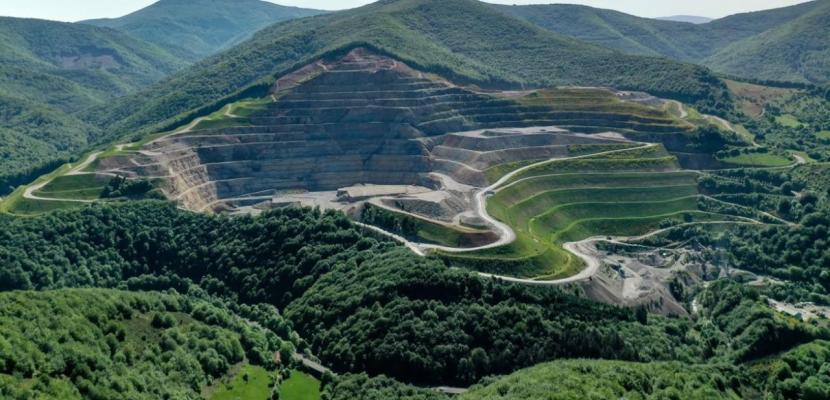
Transforming inert waste into technosoils for mining restoration

About this good practice
This practice addresses inert waste accumulation and soil scarcity while promoting sustainable mining restoration. MAGNA, a mining company in Navarra (Spain) generates large volumes of inert waste (21,707 m³ sludge/year), requiring storage space. Meanwhile, restoring the Eugi mine demands +10,000 m³ of topsoil/season, but natural soil is scarce, expensive to transport, and often of poor quality.
To address this, MAGNA developed technosoils by mixing its inert waste with organic matter to create a mixture suitable for mine restoration. A pilot project (2019-2024) tested 5 technosoil mixtures and a control soil, aiming to create artificial soils tailored to revegetation needs while reducing reliance on natural topsoil. Trials identified the manure-enriched technosoil as the best option for vegetation cover and plant growth. Results showed technosoils as viable substitutes to natural soil in land restoration.
Aligned with public policies on waste management and land restoration, the initiative complies with legal obligations for restoring mining sites. The project was funded by the CDTI (Ministry of Economy and Competitiveness), the Government of Navarra, and the ERDF.
Key stakeholders are: MAGNA, benefiting from reduced waste storage needs and a cost-effective soil alternative; the mining and environmental sectors, gaining insights into waste valorisation for land restoration; public institutions financing the project, using the outcomes to enhance environmental policies.
Expert opinion
Resources needed
The total cost of project was 758,000 €, of which 78,500 € came from public funding provided by the national government (CDTI), the Government of Navarra, and the ERDF of Navarra. The project required research and testing facilities, and infrastructure for waste processing and soil mix preparation.
Evidence of success
In indoor trials, 2 out of the 5 mixes showed high nutrient availability, rapid surface coverage, good height growth, and correct pH/conductivity. Field trials demonstrated excellent vegetation growth and soil stability.
In this case, technosoils address waste storage limitations (accumulation of 21,707 m³ of sludge per year) and topsoil scarcity (demand of 10,000 m³ of topsoil per season). Eugi mine has restored 47 ha and planted 18.700 trees, achieving successful landscape restoration.
Potential for learning or transfer
This practice demonstrates how industrial inert waste can be repurposed for environmental restoration. Other regions with similar challenges (inert waste accumulation and soil scarcity) could adapt this approach. Designing appropriate mixtures in order to create technosoils with the necessary physical, chemical and biological properties for the vegetation growth of the given area would be needed. Additionally, costs and logistics for producing, transporting, applying technosoils at larger scales should be taken into account, since it may require significant investments in infrastructure and equipment.
The use of technosoils can be scaled up with the potential to restore entire slopes, making it viable solution for large-sclae environment projects. Furthermore, it can be applied to mining, recreation of natural grasslands, and projects with land demand which look for sustainable restoration solutions.
Further information
Good practice owner
You can contact the good practice owner below for more detailed information.
